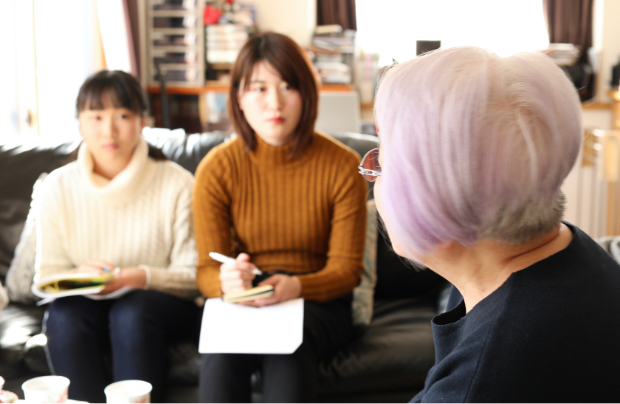HIROSHIMA memory keepers Succeed to history
Vol. 7 2016.7.15 up
You should act and see by yourself. I think, “Action changes the future.”
Kouichi Ishiwata
In Kanagawa Hiroshima City A-bomb Legacy Successor of 2016
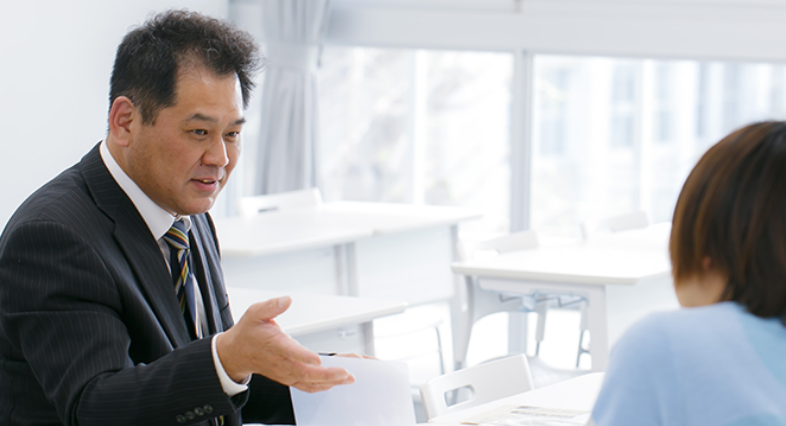
There are people who have committed themselves to passing down the A-bomb experiences to succeeding generations. What do they think of and try to share?
Mr. Ishiwata was trained in Hiroshima for three years and was officially admitted as a A-bomb Legacy Successor in spring 2016. We asked him his reason for applying for this program and his message to convey.
◆A-bomb Legacy Successors training
Because of the ageing of A-bomb survivors, Hiroshima City started the three-year training course of Successors to convey the survivors’ A-bomb experiences and to pray for peace, instead of them.
https://www.city.hiroshima.lg.jp/site/atomicbomb-peace/10164.html
How he became a Successor
I heard that you became an A-bomb Legacy Successor of the second year program this spring. Have you been interested in war and peace issues for a long time?

Yes. There were three things that motivated me.
First of all, when I was an elementary school student, I saw small photos of the A-bomb and the mushroom cloud in my social studies textbook. I asked my homeroom teacher what kind of bomb it was. Because my teacher was born after the Second World War, she couldn't answer my question. That memory has remained in my mind ever since then.

The second was an article in my local newspaper, The Kanagawa Shimbun, in 1991.
JR Takashima Station was located here before the Minatomirai project, and wooden utility poles were used for railway communication.
On May 29, 1945, the poles were partially burned by the incendiary bombs. The newspaper described these poles with a photo as precious live war witnesses of the great Yokohama air raids.
As I lived close to the place, I went to see the poles. Then I found one pole with a note in a plastic bag attached to its back, saying "If you have to remove this pole, please contact me." Interested in the note, I contacted The Kanagawa Shimbun. They told me the address of an ex-JR employee and I could meet him.
He showed me documents of the war and told about his experience of the war, including the great Yokohama air raids. As a result, I wanted to learn more.
If there was a site of bombing in our neighborhood, we would feel closer to the past. What was the third motivation?

It was the Chiran Peace Museum for Kamikaze Pilots in Kagoshima Prefecture that I visited a few years ago.
I was most moved by their farewell notes shown in the displays. At the end of them, we surely see the word "Mother." I was deeply moved by the word, “Mother." Because they had only one-way fuel on their planes when they went on their mission, they knew that they wouldn't come back alive. It is hard to believe now, but I could feel there were such days.
What made you apply for an A-bomb Legacy Successor of the Hiroshima City program?

Eleven years after visiting the Chiran museum, I learned about the project of A-bomb Legacy Successors through TV news. I wanted to become a Successor and checked for one year, consulting the Hiroshima City website.
The second recruiting period appeared eventually; however, I was anxious about the distance between Hiroshima and Yokohama. Worrying about that for a few days, I finally contacted the Peace Promotion Division, International Peace Promotion Department, Citizens Affairs Bureau of Hiroshima City.
I said, "I live in the Kanto area now. I'd like to know the procedure of the training to become a Successor." The person in charge explained to me in detail and said, "Don't worry if you can't attend all the training sessions. It will be all right as long as you have a strong will." The words gave me a supportive push and I made my mind to become a Successor.
About the Successors' training
How much did you know about the A-bombing on Hiroshima when you applied to be a Successor?
I am ashamed to say this, but I only knew about the A-bomb Dome and Hiroshima Peace Memorial Ceremony shown every August 6.
Since then, you have studied for three years. Would you tell me about the details of the curriculum?
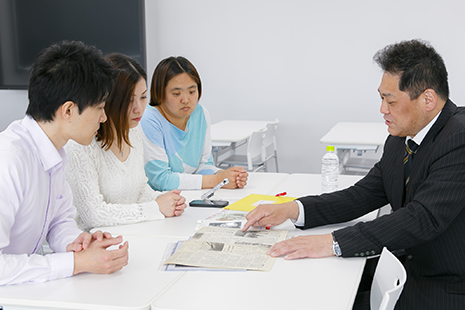
In the first year, after we studied about the facts of the A-bombing, we heard 22 120-minute survivors stories. Then we decided which story we would pass down.
In the second year, each of us met the survivor whose experience we wanted to succeed once or twice a month. We heard their stories and conducted field work. In the third year, we made a draft of the stories of our chosen survivors and my thought about peace. Then we had our drafts checked and authorized by our chosen survivors. We had story telling practice in front of other trainees, then in front of our chosen survivors. That was our graduation exam. On April 8 this year, I was given the letter of appointment as an A-bomb Legacy Successor at the conferring ceremony.
I think that it is very difficult to pass down experiences which are not your own.
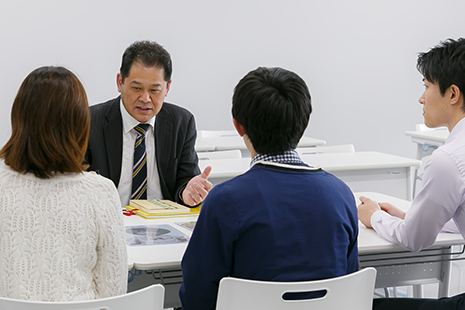
Yes. I've been struggling about how to pass down my chosen survivor's experiences without having my own real life experiences of war and A-bombing. I can't quote the survivor's words such as "I hurt," "It was hot," "It was painful." I can only say "He said that it hurt," "He said that it was hot," or "He said that it was painful." I can't tell the story of his experience as lively as he does. Remembering his face, I have to carefully choose my words.
When I joined this program, I was a complete stranger. I had no relatives in Hiroshima. So, I bought a map to learn the names of places and wrote in a notebook the differences of accents between Kanto area and Hiroshima. I even talked on the telephone with my chosen survivor for two hours. It was like a person-to-person study session.
In the first year, I came to Hiroshima every month and in the second year, twice a month at most. Walking around with the survivor in Hiroshima city gave me good opportunities to learn the townscape, as I was not familiar with the area.
Does walking around the city with your chosen survivor have a different meaning from just listening to his story?
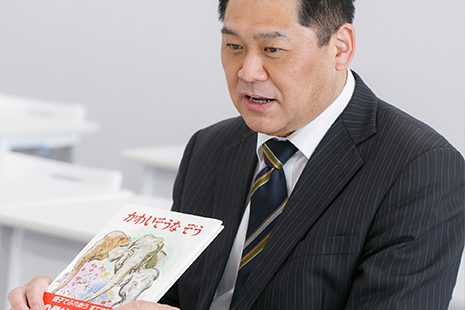
For example, if you attend the Peace Memorial Ceremony at the Peace Memorial Park in Hiroshima, you obviously feel differently from watching the ceremony on TV at home.
First, you feel the overwhelming atmosphere inside and outside of the place. You see elderly people gathering there and see their sad eyes. You see their tears and sorrow. There are lots of things that you can't see on TV. This is what I felt when I attended the ceremony in Hiroshima.
You should act and see by yourself. Action changes the future. You can surely find and feel something new, if you go to the site.
Message he wants to convey
As elderly survivors are decreasing now, you will be busy as a Successor. Could you tell me what you focus on to convey the survivor's experience?

I don't think the people who listen to the story of the survivor's experience are all active. I think some are passive. Some children visit Hiroshima just because Hiroshima is the destination of their school trip. Hearing the serious A-bomb story is tough for them.
So, I started my draft for this program with "Faithful Elephants," the story about poor elephants in the Ueno zoo during the war. Then I follow up with the A-bomb story. I think that telling the animal story first might be helpful to get children to listen, rather than telling the story of war first. I made my draft in my own way, thinking how to get passive people to listen to the story.
Whom do you intend to tell the story to from now?

Of course, I want to tell the story to the younger generation who has their future ahead of them, elementary school children and junior-high school students.
I want to sincerely tell them that their home country had wars in the past. About the things I can't describe enough, I show them pictures such as keloid scars and burned bodies. Though people who see them might feel sick, I really hope that they understand how important peace is, through the pictures.
It has been 71 years since the A-bomb was dropped on Hiroshima. It was the far distant past for children. My challenge is to convey my message to them so they can understand it. Then hopefully, they will become interested, even a little, in the issues of war and peace.
Interviewed on July 2016.
About
"Interviews with HIROSHIMA memory keepers" is a part of project that Hiroshima「」– 3rd Generation Exhibition: Succeeding to History
We have recorded interviews with A-bomb survivors, A-bomb Legacy Successors, and peace volunteers since 2015.
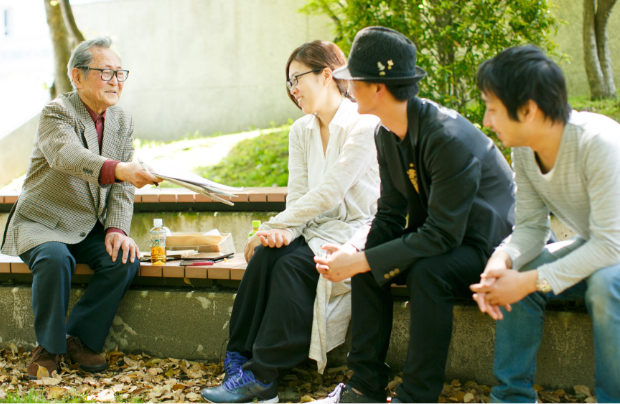
What are Hiroshima memory keepers feeling now, and what are they trying to pass on?
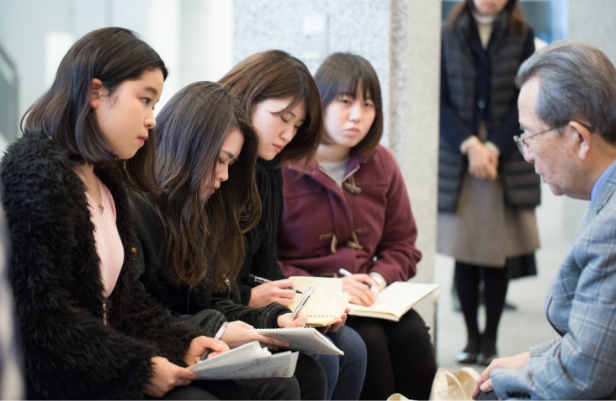
What can we learn from the bombing of Hiroshima? What messages can we convey to the next generation? Please share your ideas.
